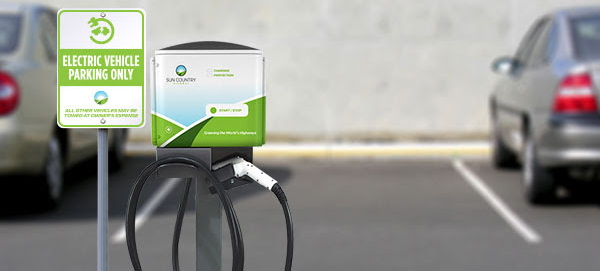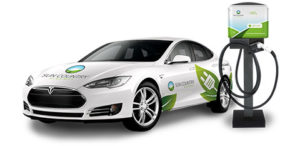Electrifying the Okanagan: The future looks bright for the tourism industry

Where is the tourism industry headed in the Thompson Okanagan? Imagine seeing electric cars and vans dominating the roads as they transport people and goods to wineries, resorts and attractions up and down the valley. Well that future is soon to become a reality.
There is excitement in the eyes of Glenn Mandziuk, CEO of the Thompson Okanagan Tourism Association, when he talks about the future. “The Thompson Okanagan Tourism Association is committed to making our region one of the worlds top eco-friendly destinations over the next seven years. We are working on a Sustainability Tourism Charter that is the first of it’s kind in North America, and will guide our industry and visitors to the region. One of our first steps to supporting the tourism businesses in the Thompson Okanagan will be to install Electric Vehicle (EV) charging stations at key tourism destinations, supported by marketing initiatives, to inform and attract electric vehicle owners to tour through our region.” This vision is already underway with the creation of route97.net, a website that promotes the ribbon of highway stretching from Washington to Alaska, highlighting the EV experiences available along the way.

And this vision aligns perfectly with Canadian company Sun Country Highway. Wanting to build the most sustainable electric vehicle infrastructure in the world, Sun Country Highway set out to lead the electric vehicle movement by promoting the adoption of zero emission transportation. They currently have a program that provides free EV Charging equipment to qualifying businesses or organizations. And why would a business want to do this? The Director for Western Canada, Rob MacGregor explains, “Having an EV charging station draws in new clientele to the business that is like no other consumer. They are well educated, sustainability advocates and are not afraid to spend money on good food, wine and unique experiences.
They have a broad network of friends and organizations and tell everyone they know, bringing more people into that business. We’ve noticed that on average, every business that installs one of our charging stations gets an economic shot in the arm of about 10-15%, and the install only costs an average of $800.”

The benefits sure speak to themselves, but how do recipients of the program feel? Mason Spink, winemaker at Dirty Laundry Vineyard was unsure how much additional traffic they would have when they first started looked into installing a charging station. But he quickly realized that they had nothing to lose. “It made sense to get it installed, and it has been interesting to be on the forefront of this growing trend,” Spink notes. He has noticed more electric vehicles arriving this year to charge up (which is free for EV owners to use) and most users are Tesla owners.
But even with the current $5000 grant available to purchase an electric vehicle, the luxurious Tesla is still very costly. Why would there be more Teslas on the road than the other more affordable electric models? Rob MacGregor had the answer. “Closer to the urban centers, there will be more Nissan Leafs and Chevy Volts, maybe a few Mercedes Smart electrics and BMW I3s. Because of their shorter electric range, they need to stick closer to home and work, plugging in more often. But once you start getting a little more rural, it’s all about the Teslas. Teslas have a bigger driving range, and Tesla drivers aren’t like any other group of people we know. They love to drive. Driving a Tesla is like going on a ride at Disneyland. That hour or so they spend charging their car, they might spend $200-300 at that particular winery, golf course, restaurant or resort, and then spread the word to all their friends and other EV drivers about their wonderful experience.”
There are already over 30 wineries and numerous other hotels, attractions, centres and locations from Osoyoos to Vernon where EV charging stations have already been installed. And there seems to be a lot of help coming this way for the Hospitality Tourism industry. A great place to find out the latest grants and programs is through Plug In BC, a resource hub coordinated by the Fraser Basin Council, for anyone seeking opportunities and support for electric vehicles in the province. They are currently working on a program to roll out EV Fast Chargers, allowing electric car owners to charge up in 20 minutes or so. If you are wondering where you might fit in this grand vision, this might be the best place to start.
But don’t wait too long. There are already wineries, such as Kismet Winery, planning specific tours and promotions for EV drivers to attract more of these desirable tourists. Others, such as Saxon Winery, are focusing on reducing their carbon footprint through their supply chain by switching to an all-electric transport company. There are already electric wine tours in Napa Valley, showing the growing need for luxurious, environmentally friendly experiences.
We are just starting to scratch the surface in the interior with the possibilities for boosting tourism through electrifying transportation. Creating an electric charging network will “bring people into the valley that aren’t going to affect the physical environment in a negative way. What a better way to boost tourism than with electric cars.” adds MacGregor. The future is looking bright.

